
Places of Interest
- Lake Bonita
- Betar Byway
- Lake Luzerne
- Lapland Pond
- Big Bay Preserve (Coming soon!)
- Van Dusen Preserve (Coming soon!)
Latest Posts
- Hovey Pond Park
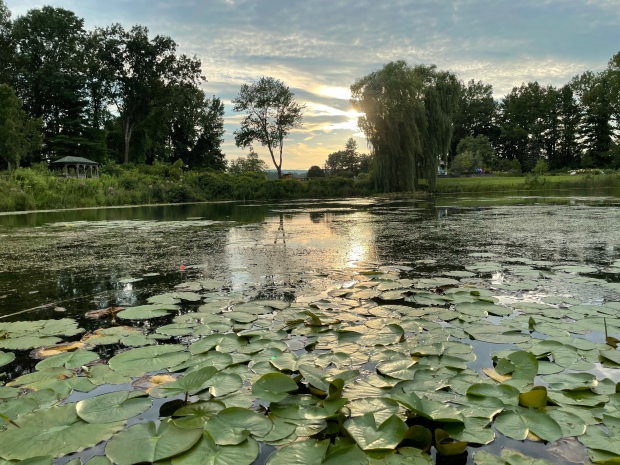 Hovey Pond offers a convenient nature retreat from the busier streets at the center of Queensbury. It is an easy quarter-mile loop along which you’ll find wildflowers, ducks, and turtles. Walking the catwalk to the south of the pond takes you into some wetlands where frogs and skimmers can alsoContinue reading “Hovey Pond Park”
Hovey Pond offers a convenient nature retreat from the busier streets at the center of Queensbury. It is an easy quarter-mile loop along which you’ll find wildflowers, ducks, and turtles. Walking the catwalk to the south of the pond takes you into some wetlands where frogs and skimmers can alsoContinue reading “Hovey Pond Park” - Staghorn Sumac
 Rhus typhina, the staghorn sumac,[2] is a species of flowering plant in the familyAnacardiaceae, native to eastern North America. It is primarily found in southeastern Canada, the northeastern and midwestern United States, and the Appalachian Mountains,[3] but it is widely cultivated as an ornamental throughout the temperate world. Source: RhusContinue reading “Staghorn Sumac”
Rhus typhina, the staghorn sumac,[2] is a species of flowering plant in the familyAnacardiaceae, native to eastern North America. It is primarily found in southeastern Canada, the northeastern and midwestern United States, and the Appalachian Mountains,[3] but it is widely cultivated as an ornamental throughout the temperate world. Source: RhusContinue reading “Staghorn Sumac” - Cardinal flower
 Lobelia cardinalis, the cardinal flower(syn.L. fulgens), is a species of flowering plant in the bellflower family Campanulaceae native to the Americas, from southeastern Canada south through the eastern and southwestern United States, Mexico and Central America to northern Colombia.[2] Source: Lobelia cardinalis — Wikipedia
Lobelia cardinalis, the cardinal flower(syn.L. fulgens), is a species of flowering plant in the bellflower family Campanulaceae native to the Americas, from southeastern Canada south through the eastern and southwestern United States, Mexico and Central America to northern Colombia.[2] Source: Lobelia cardinalis — Wikipedia - Lake Luzerne
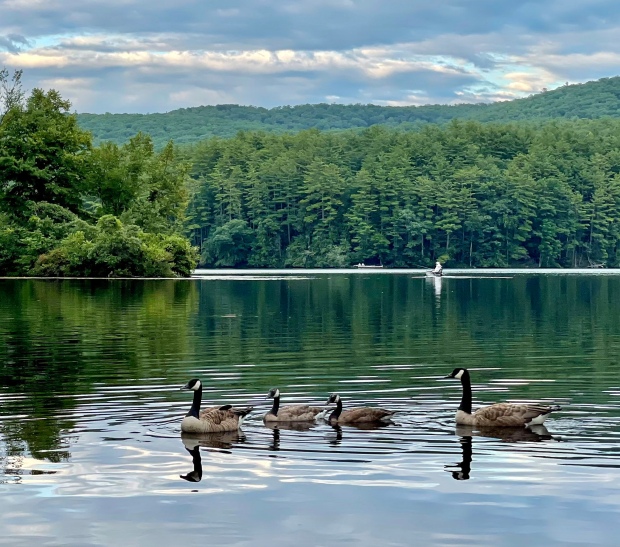 In the featured photo above, a family of geese drift across Lake Luzerne and radiate a subtle rippling of water behind them with mountains of green and a sky full of clouds that create the backdrop for this picturesque view.
In the featured photo above, a family of geese drift across Lake Luzerne and radiate a subtle rippling of water behind them with mountains of green and a sky full of clouds that create the backdrop for this picturesque view. - Eastern Newt
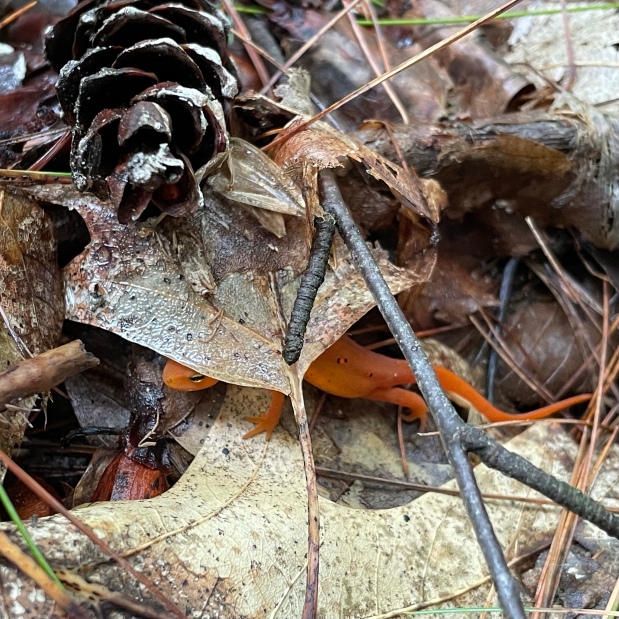 The eastern newt (Notophthalmus viridescens) is a common newt of eastern North America. It frequents small lakes, ponds, and streams or nearby wet forests. The eastern newt produces tetrodotoxin, which makes the species unpalatable to predatory fish and crayfish.[2] It has a lifespan of 12 to 15 years in theContinue reading “Eastern Newt”
The eastern newt (Notophthalmus viridescens) is a common newt of eastern North America. It frequents small lakes, ponds, and streams or nearby wet forests. The eastern newt produces tetrodotoxin, which makes the species unpalatable to predatory fish and crayfish.[2] It has a lifespan of 12 to 15 years in theContinue reading “Eastern Newt” - Hornwood Parasitic Wasp
 In the photo above, a hornworm hosts many cocoons of Cotesia congregata. Cotesia congregata is a parasitoid wasp of the genus Cotesia. The genus is particularly noted for its use of polydnaviruses. Parasitoids are distinct from true parasites in that a parasitoid will ultimately kill its host or otherwise sterilizeContinue reading “Hornwood Parasitic Wasp”
In the photo above, a hornworm hosts many cocoons of Cotesia congregata. Cotesia congregata is a parasitoid wasp of the genus Cotesia. The genus is particularly noted for its use of polydnaviruses. Parasitoids are distinct from true parasites in that a parasitoid will ultimately kill its host or otherwise sterilizeContinue reading “Hornwood Parasitic Wasp” - Common whitetail
 The common whitetail or long-tailed skimmer (Plathemis lydia) is a common dragonfly across much of North America, with a striking and unusual appearance. The male’s chunky white body (about 5 cm or 2 inches long), combined with the brownish-black bands on its otherwise translucent wings, give it a checkered look.Continue reading “Common whitetail”
The common whitetail or long-tailed skimmer (Plathemis lydia) is a common dragonfly across much of North America, with a striking and unusual appearance. The male’s chunky white body (about 5 cm or 2 inches long), combined with the brownish-black bands on its otherwise translucent wings, give it a checkered look.Continue reading “Common whitetail” - Lake Bonita
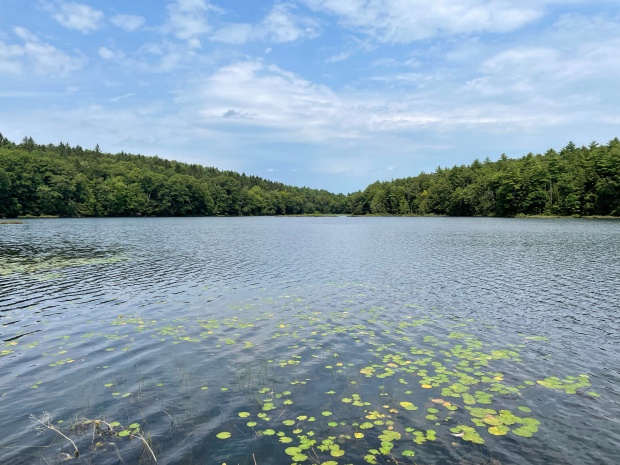 Approximately 2 miles of trail encircle Lake Bonita offering regular views of the scenic lake and its surroundings, with several streams crossing its path. To the north is a bridge that crosses over Beaver Brook and on the east is a cottage, dock, and rock overlook. Location Trail photos
Approximately 2 miles of trail encircle Lake Bonita offering regular views of the scenic lake and its surroundings, with several streams crossing its path. To the north is a bridge that crosses over Beaver Brook and on the east is a cottage, dock, and rock overlook. Location Trail photos - Betar Byway
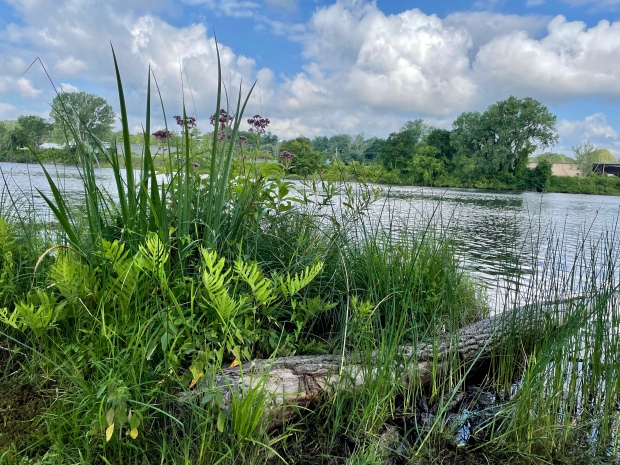 The Betar Byway is a popular paved trail for pedestrians and cyclists that runs parallel to the Hudson River. While not known as a nature trail, wildlife is still in abundance. Location Trail photos
The Betar Byway is a popular paved trail for pedestrians and cyclists that runs parallel to the Hudson River. While not known as a nature trail, wildlife is still in abundance. Location Trail photos - Silver-spotted skipper
 Epargyreus clarus, the silver-spotted skipper, is a butterfly of the family Hesperiidae. It is claimed to be the most recognized skipper in North America.[2] E. clarus occurs in fields, gardens, and at forest edges and ranges from southern Canada throughout most of the United States to northern Mexico, but isContinue reading “Silver-spotted skipper”
Epargyreus clarus, the silver-spotted skipper, is a butterfly of the family Hesperiidae. It is claimed to be the most recognized skipper in North America.[2] E. clarus occurs in fields, gardens, and at forest edges and ranges from southern Canada throughout most of the United States to northern Mexico, but isContinue reading “Silver-spotted skipper”